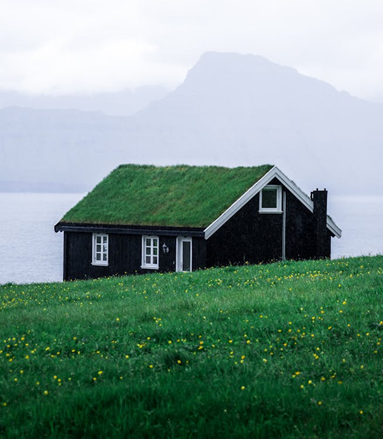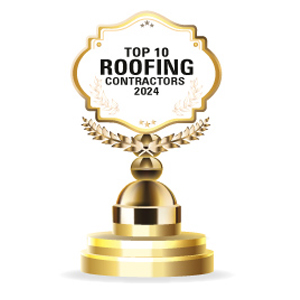Thank you for Subscribing to Construction Business Review Weekly Brief
Top Roofing Trends Taking Over the Housing Industry

Using Eco-Friendly Materials
Using sustainable materials has become a priority in most roofing practices. For instance, the latest building codes require modern homes to invest in eco-friendly materials that minimize environmental impact without compromising on quality. These include recycled metal, cool roofs, solar roof shingles, clay, and concrete tiles. These materials are long-lasting and energy-saving, while others can act as a roof while generating renewable energy.
The advantage of environmentally friendly materials is that they increase the property’s value and reduce the carbon footprint. However, their effectiveness depends on the roofing service and the home’s location. For this reason, homeowners should contact local contractors before choosing any material. For example, working with the best roofing company in Syracuse helps homeowners identify the right materials ideal for their climate and get quality roofs for their properties.
Smart Roof Technology
Smart roof technology involves using advanced materials and devices that enhance the house’s functionality. The technologies also detect structural and mechanical issues and adapt quickly to weather conditions. They include solar panel integration, temperature-controlled roofs, and leak-detection systems. Other advanced energy monitoring systems also give homeowners real-time data on energy usage, helping them to maintain lower energy bills.
Besides enhancing the property’s aesthetic appeal, smart roof technologies improve energy efficiency and the home’s durability. They also help reduce maintenance costs by helping homeowners detect issues and address them before they escalate. However, they must align with the existing systems for them to work effectively.
Green Roofs
Green roofs and rooftop gardens are another trend transforming the housing market. This trend involves installing vegetation over a waterproof membrane turning rooftops into gardens. The four primary categories include intensive, extensive, semi-intensive, and brown green roof systems.
Extensive systems have lower biodiverse value, while intensive systems are more complex, creating a typical garden environment. On the other hand, brown or biodiverse systems combine the features of extensive and intensive systems, resulting in a low-maintenance green roof that meets the most environmental standards. These features include a shallow soil layer of at least two inches, log revetments, and recycled aggregates that offer additional micro-habits.
Green roofs improve air quality, insulation, and stormwater management. However, they increase the property’s weight, forcing builders to invest in structural reinforcement. They also need regular maintenance, although property owners can use automated irrigation systems to minimize manual maintenance costs.
Minimalist and Flat Roof Designs
Minimalism is becoming a dominant trend in modern house designs. Flat and low-slope roofs are prevalent in residential and industrial developments, aligning with contemporary homes’ sleek and geometric aesthetics. These styles maximize space utilization, especially in congested urban settings. They also allow homeowners to convert rooftops into outdoor living spaces like gardens and patios.
Flat roofs promote energy efficiency and are ideal for solar panel installation. They also require fewer materials to install, saving homeowners installation costs in the long run. However, they have water drainage concerns. Therefore, homeowners should invest in advanced waterproofing materials and drainage systems to maximize functionality.
Prefabricated Roofing Systems
The trend involves manufacturing roof components off-site in a controlled environment before transporting and assembling them on location. The technique has been used for commercial roofing for many years. However, it is gaining traction in residential roofing due to its enhanced cost efficiency and sustainable benefits. For instance, prefabricated roofs allow for faster installation than traditional methods.
Another significant advantage of prefab roofs is their consistency in quality. Factory-made components are built under controlled conditions, minimizing human errors. They are also made with high-quality composite materials that can withstand extreme weather, fire, or impact damage. Therefore, with advancements in material science and roof customizations, homeowners should expect more prefab roofs beyond prefabricated roofs and commercial buildings.
3D Printing and Drone Technology
3D printing and drone technologies are revolutionizing the housing industry, including roofing. These innovations allow roof personalization, from material choice to unique designs. For instance, 3D printing enables architects and engineers to develop complex and highly durable roofing structures that would be difficult to achieve using traditional methods.
Drones are crucial in roof installation and inspections. For instance, they help home inspectors capture high-resolution images and thermal scans to detect leaks, cracks, and insulation issues. They also help construction teams measure dimensions accurately, producing precise and efficient installations. Incorporating these innovations in building practices results in automated roofing systems, lowering roof installation and repair costs.
Endnote
The current roofing climate has emerged as a driving force towards sustainable and weather-resistant homes. By using the latest practices, such as green roofs, smart technology, and eco-friendly materials, homeowners can cater to modern needs and meet the set roofing standards. However, they should take time to understand the local climate to ensure they pick materials and technology that can withstand extreme weather conditions.
| Share this Article: Tweet |



